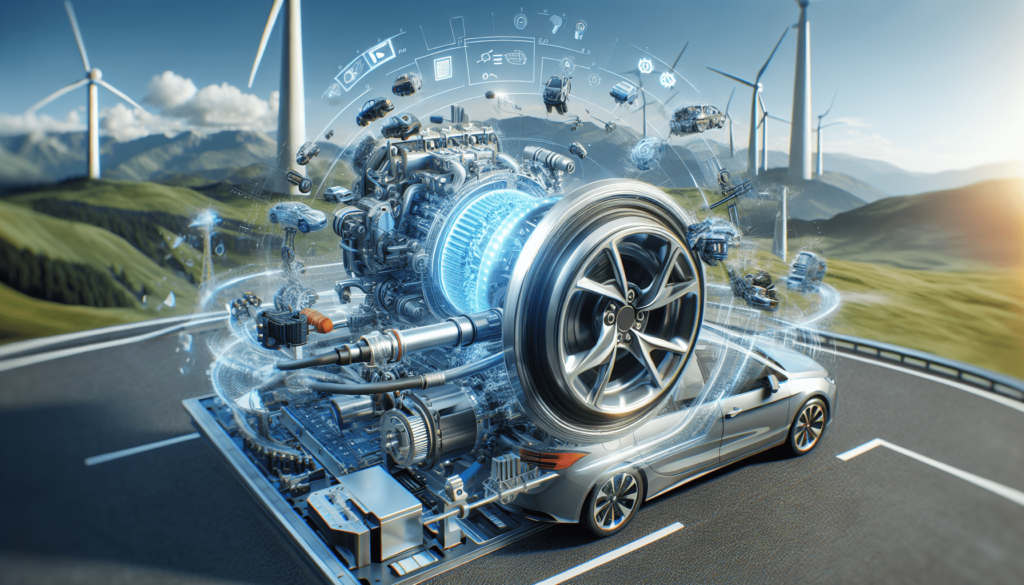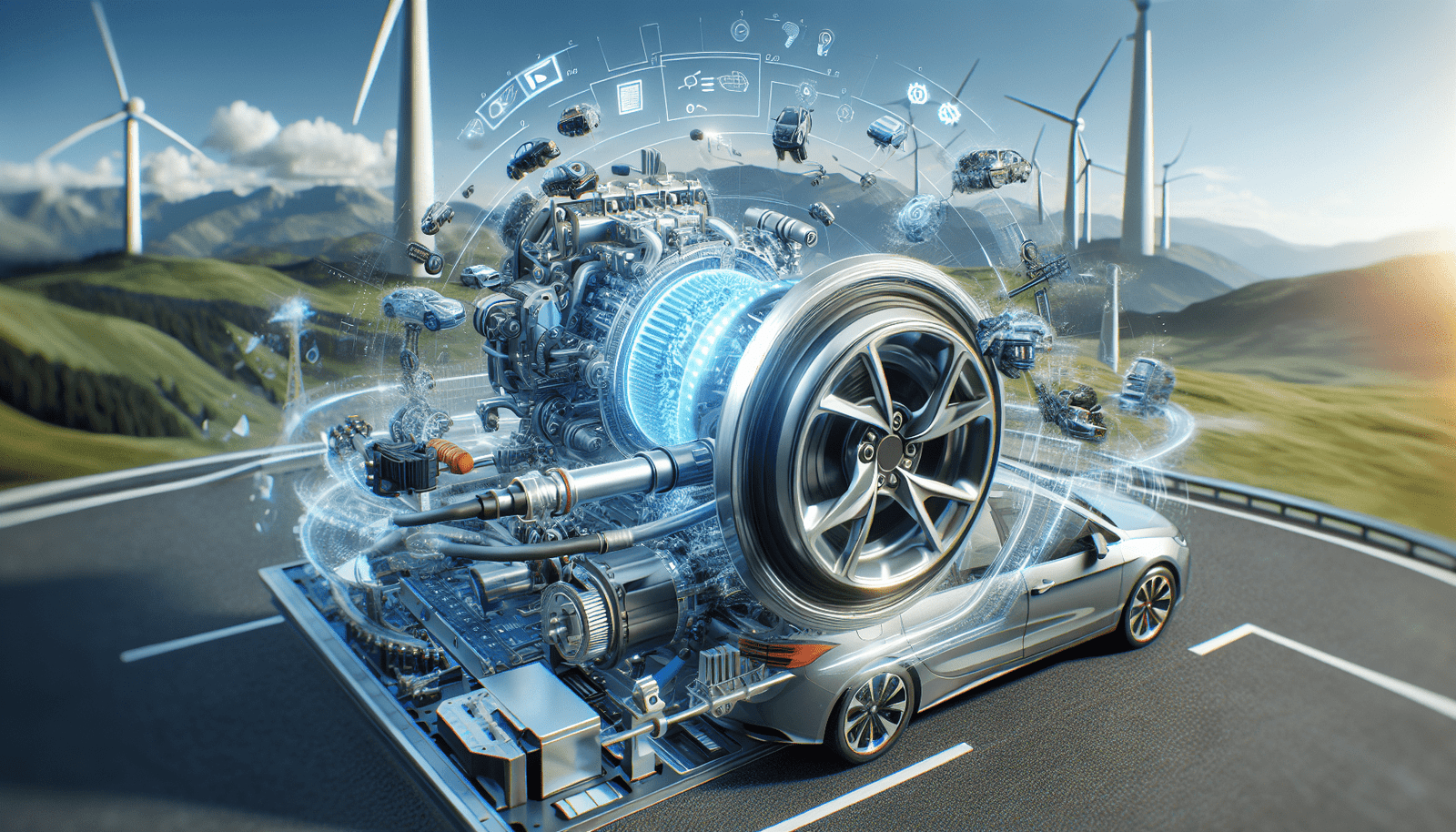Welcome to the fascinating world of electric vehicles and sustainable transportation! In this article, we will explore the important role of regenerative braking in enhancing the sustainability of electric vehicles. Regenerative braking is a technology that allows electric vehicles to capture and store energy that would otherwise be wasted during braking, thus improving efficiency and reducing the overall environmental impact of these vehicles. Stay tuned as we delve deeper into how regenerative braking contributes to making electric vehicles a more sustainable mode of transportation.

Introduction
Hey there! Have you ever wondered about the role of regenerative braking in electric vehicle sustainability? It’s a fascinating topic, and today we’re going to dive deep into how regenerative braking works, why it’s important for electric vehicles, and how it contributes to a more sustainable transportation system. Let’s get started!
What is Regenerative Braking?
Regenerative braking is a technology that allows electric vehicles to recover kinetic energy when slowing down or stopping. Instead of just dissipating this energy as heat through conventional friction braking systems, regenerative braking stores it in the vehicle’s battery for later use. This process helps improve the overall efficiency of electric vehicles and reduces energy consumption.
How Does Regenerative Braking Work?
When you apply the brakes in an electric vehicle equipped with regenerative braking, the electric motor functions as a generator, converting the vehicle’s kinetic energy back into electrical energy. This electricity is then sent back to the battery for storage or used to power other systems within the vehicle. Essentially, regenerative braking allows the vehicle to capture energy that would otherwise be lost during braking and reuse it, making the vehicle more energy-efficient.
Benefits of Regenerative Braking
Regenerative braking offers several key benefits for electric vehicles and contributes to their sustainability. By capturing and reusing energy that would otherwise be wasted, regenerative braking helps extend the driving range of electric vehicles and reduces the overall energy consumption required to operate them. This technology also helps reduce wear and tear on the vehicle’s traditional braking system, leading to lower maintenance costs over time.
Environmental Impact
One of the most significant advantages of regenerative braking is its positive environmental impact. By enabling electric vehicles to recover and reuse energy during braking, regenerative braking helps reduce greenhouse gas emissions and air pollution associated with transportation. This technology plays a crucial role in promoting the adoption of electric vehicles as a cleaner and more sustainable alternative to traditional gasoline-powered vehicles.
Contribution to Sustainable Transportation
Regenerative braking is a driving force behind the transition to a more sustainable transportation system. As cities and countries around the world seek to reduce their carbon footprint and combat climate change, electric vehicles equipped with regenerative braking are becoming increasingly popular. By harnessing the power of regenerative braking, electric vehicles can play a vital role in building a more sustainable future for transportation.
Efficiency and Range
Another important aspect of regenerative braking is its impact on the efficiency and range of electric vehicles. By recovering and reusing energy during braking, regenerative braking helps improve the overall efficiency of electric vehicles, leading to lower energy consumption and operating costs. This increased efficiency also translates to an extended driving range, allowing electric vehicle owners to travel further on a single charge.
Maximizing Battery Life
Regenerative braking can also help maximize the lifespan of the vehicle’s battery by reducing the strain on the battery during braking events. By sending regenerated energy back to the battery for storage, regenerative braking minimizes the need for rapid charging and discharging cycles that can degrade the battery over time. This, in turn, helps prolong the battery’s life and ensures optimal performance throughout the vehicle’s lifespan.

Impact on Driving Experience
Beyond its environmental and efficiency benefits, regenerative braking can also enhance the overall driving experience for electric vehicle owners. The regenerative braking system provides a smooth and seamless transition between acceleration and deceleration, offering a more responsive and controlled driving experience. This technology also allows drivers to customize the level of regenerative braking to suit their preferences, providing a personalized driving experience that enhances comfort and convenience.
Adaptive Regenerative Braking Systems
Some electric vehicles are equipped with adaptive regenerative braking systems that adjust the level of regeneration based on driving conditions and the driver’s input. These systems use sensors and advanced algorithms to optimize regenerative braking performance, providing a more efficient and tailored driving experience. Adaptive regenerative braking systems can help maximize energy recapture during braking events while maintaining a smooth and natural driving feel.
Challenges and Considerations
While regenerative braking offers numerous benefits for electric vehicles, there are also some challenges and considerations to keep in mind. One potential limitation of regenerative braking is its effectiveness at low speeds, where the vehicle’s momentum may not generate enough energy to recapture. Additionally, regenerative braking systems can be sensitive to external factors such as weather conditions, road surfaces, and driving habits, which may impact their performance.
Regenerative Braking in Cold Weather
In cold weather conditions, regenerative braking systems may experience reduced efficiency due to the lower temperature affecting the battery’s performance. Cold weather can decrease the battery’s ability to store and discharge energy effectively, resulting in lower regeneration rates during braking events. To address this issue, some electric vehicles are equipped with heating systems for the battery to maintain optimal performance in cold climates.

Future Developments and Innovations
As the demand for electric vehicles continues to grow, manufacturers are investing in research and development to enhance regenerative braking technology further. Future developments may include more advanced regenerative braking systems that can capture and store even more energy during braking events, improving overall efficiency and performance. Innovations in materials, sensors, and software algorithms are also expected to contribute to the evolution of regenerative braking systems in electric vehicles.
Integration with Autonomous Driving
The integration of regenerative braking systems with autonomous driving technology represents an exciting opportunity for the future of electric vehicles. Autonomous vehicles can leverage regenerative braking systems to optimize energy recapture and maximize efficiency during driving maneuvers. By combining regenerative braking with autonomous driving capabilities, electric vehicles can achieve new levels of energy savings and sustainability, paving the way for a greener and more efficient transportation system.
Conclusion
Congratulations, you’ve made it to the end of our exploration of the role of regenerative braking in electric vehicle sustainability! We’ve covered everything from how regenerative braking works to its environmental impact, efficiency benefits, and future developments. Hopefully, you now have a better understanding of the importance of regenerative braking in promoting a more sustainable transportation system and the numerous benefits it offers for electric vehicles. Remember, every time you press the brakes in an electric vehicle, you’re not just slowing down – you’re also helping to build a cleaner and greener future for all of us. Happy driving!


